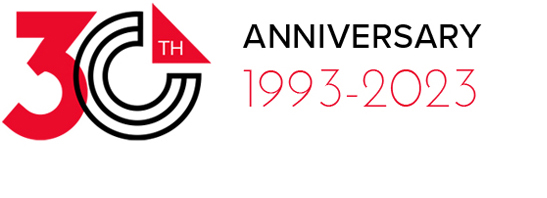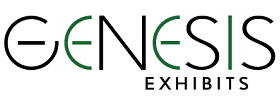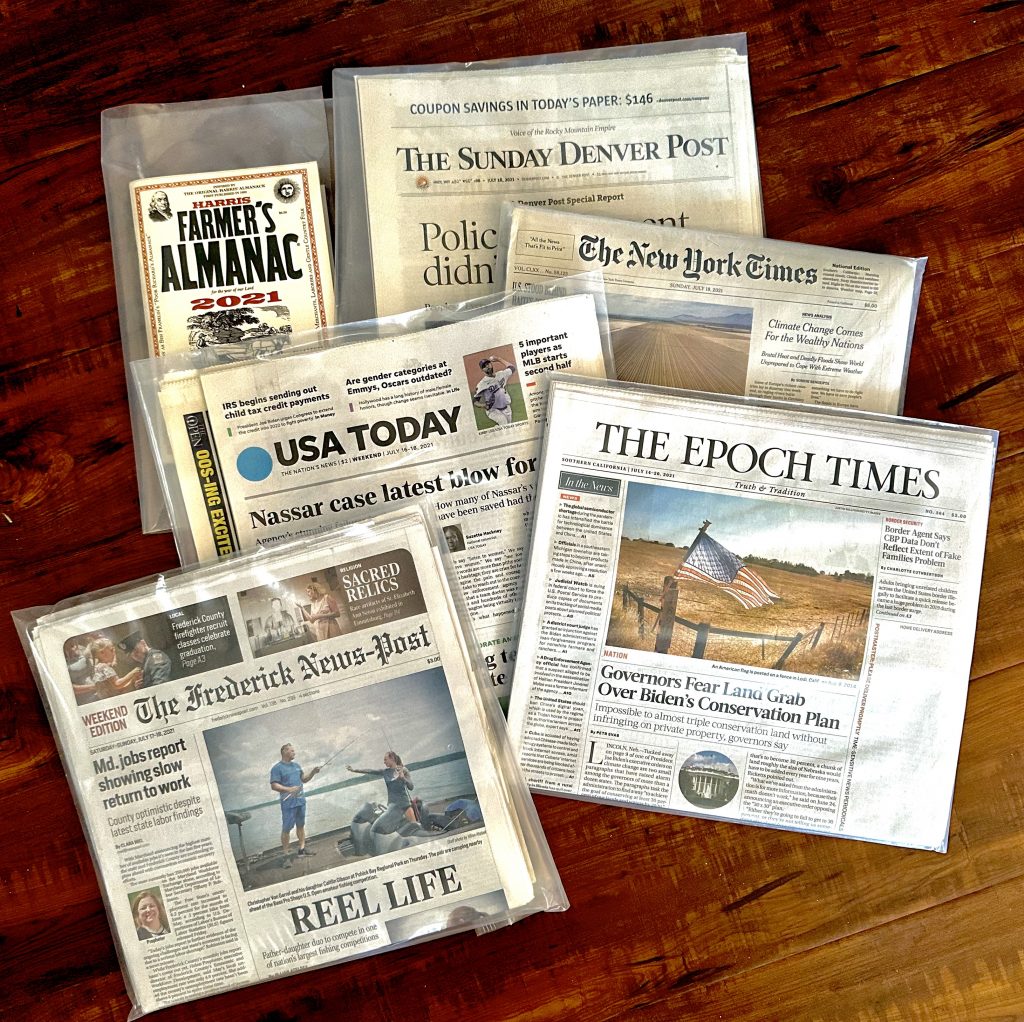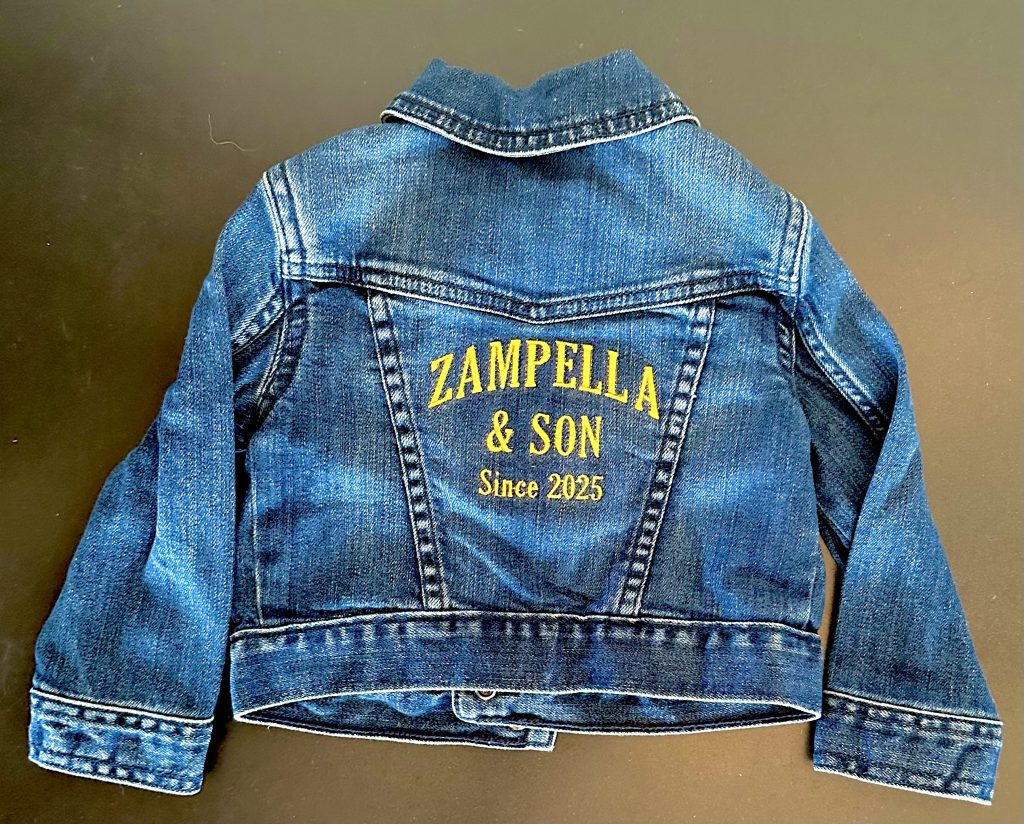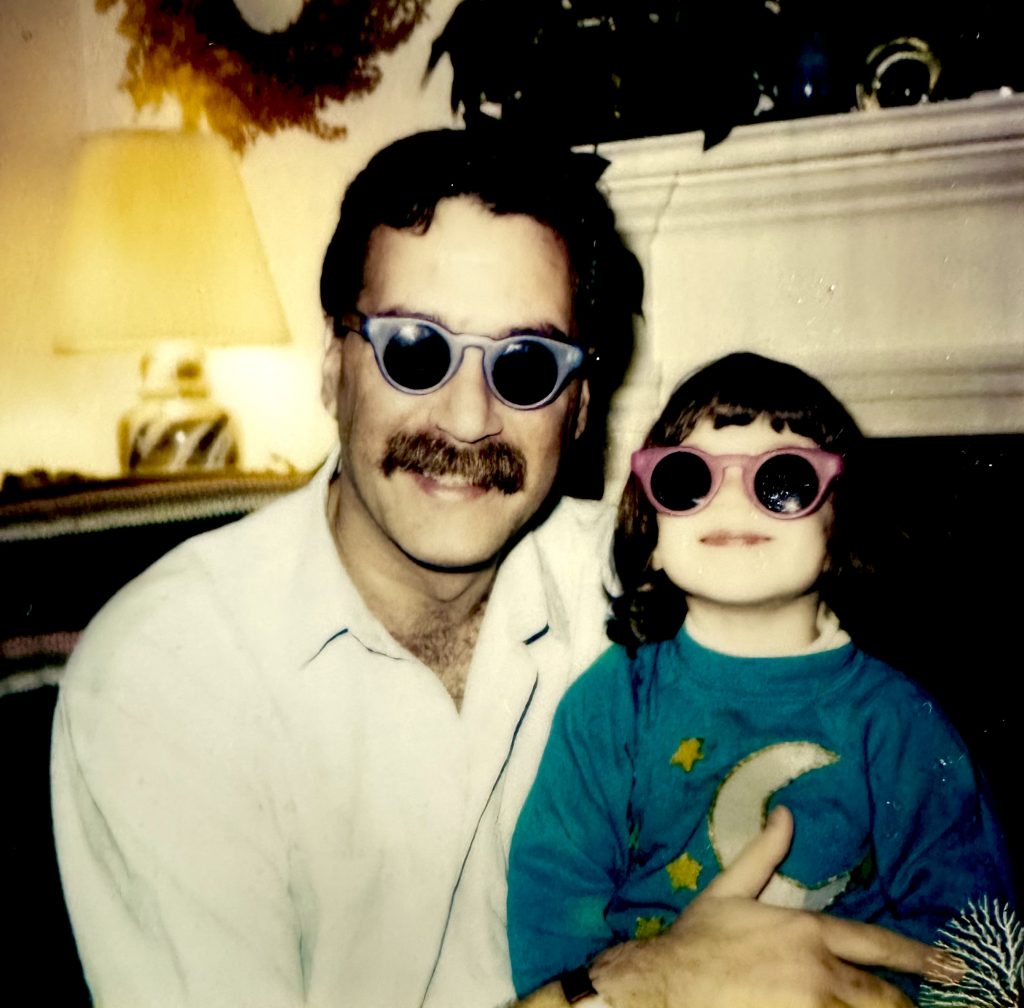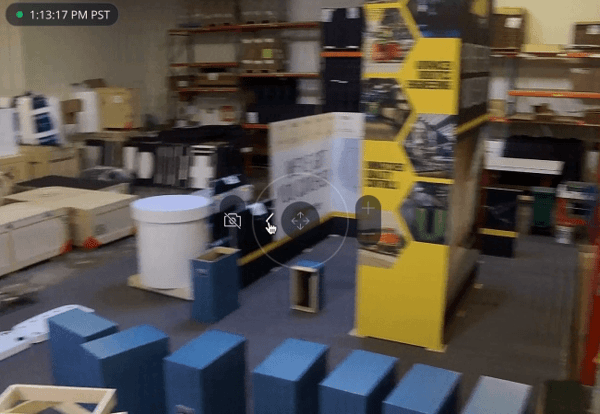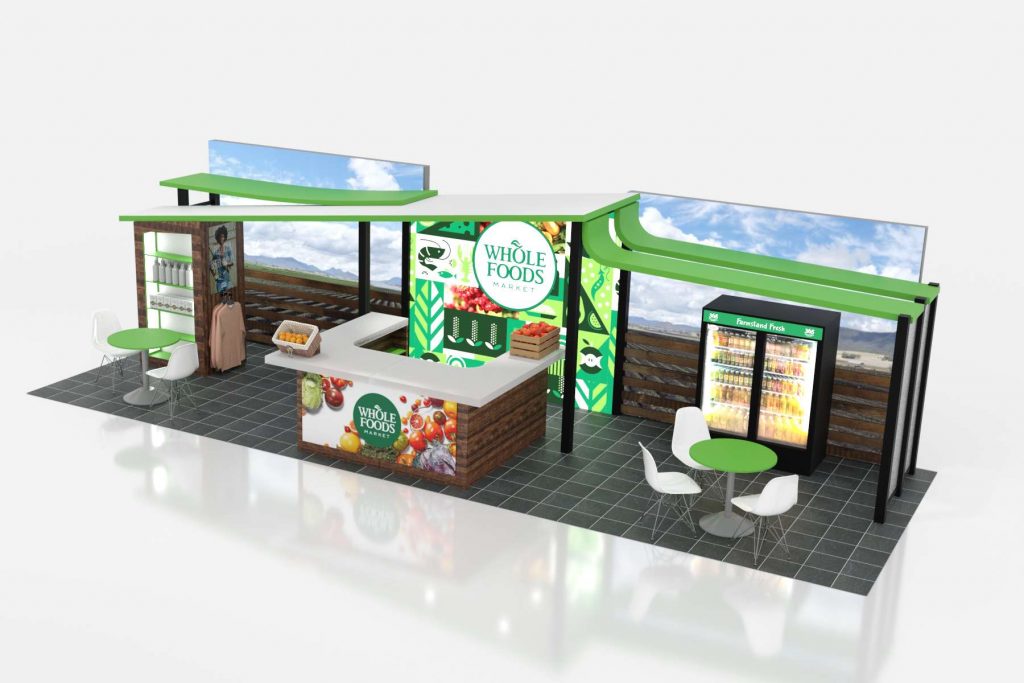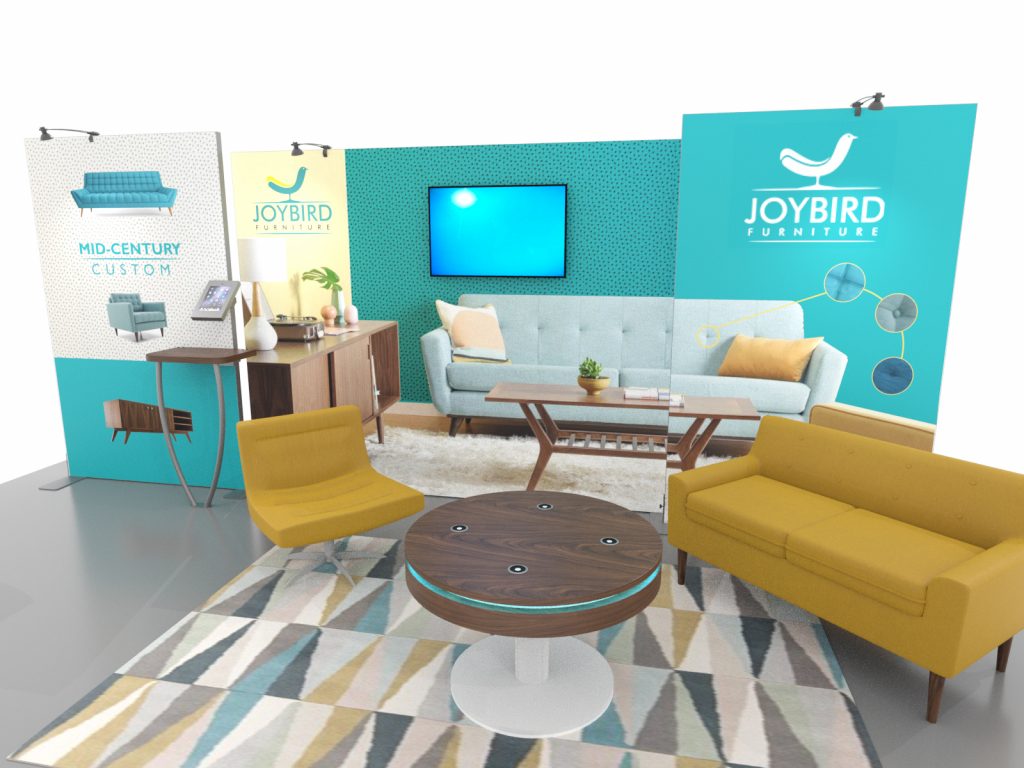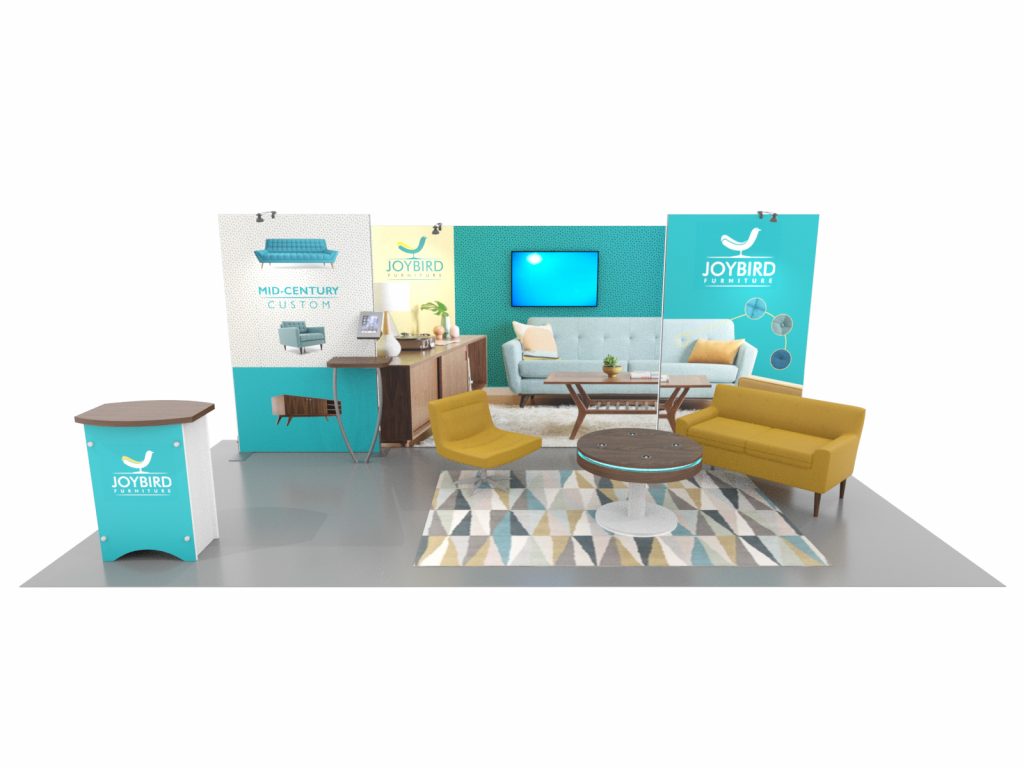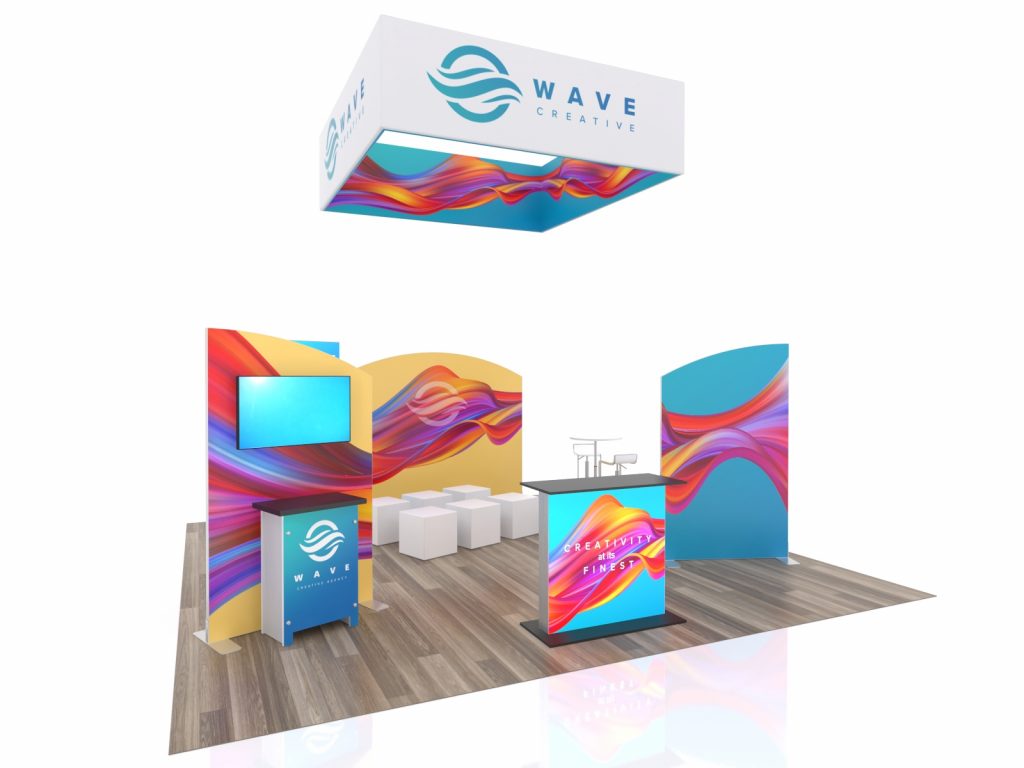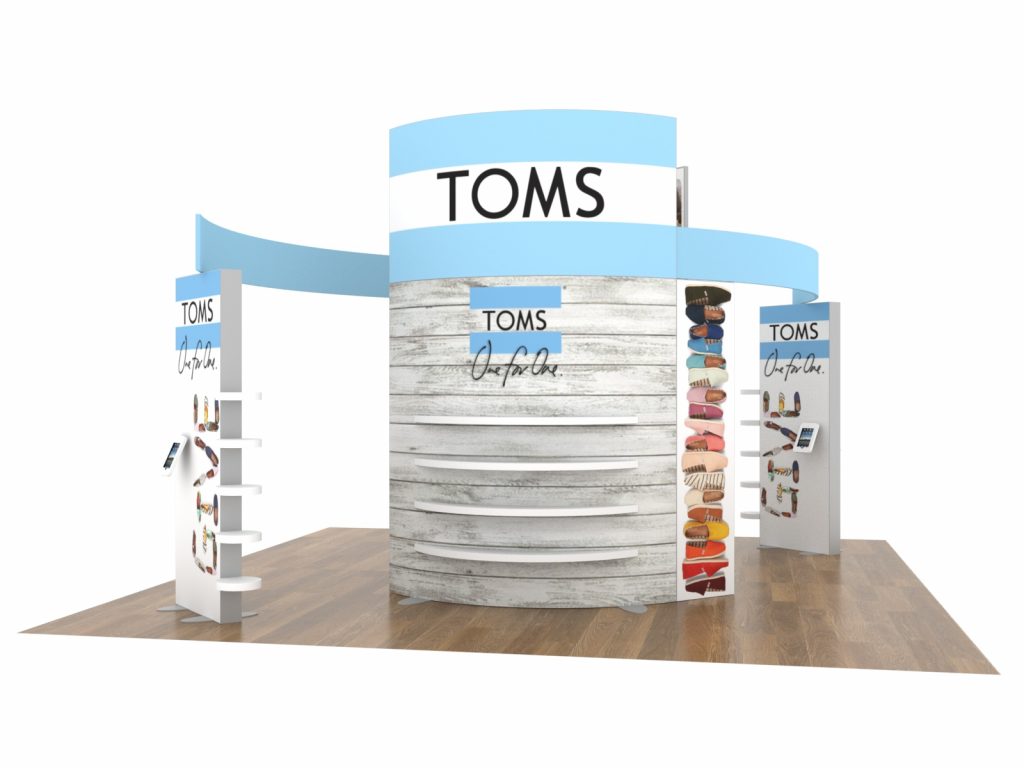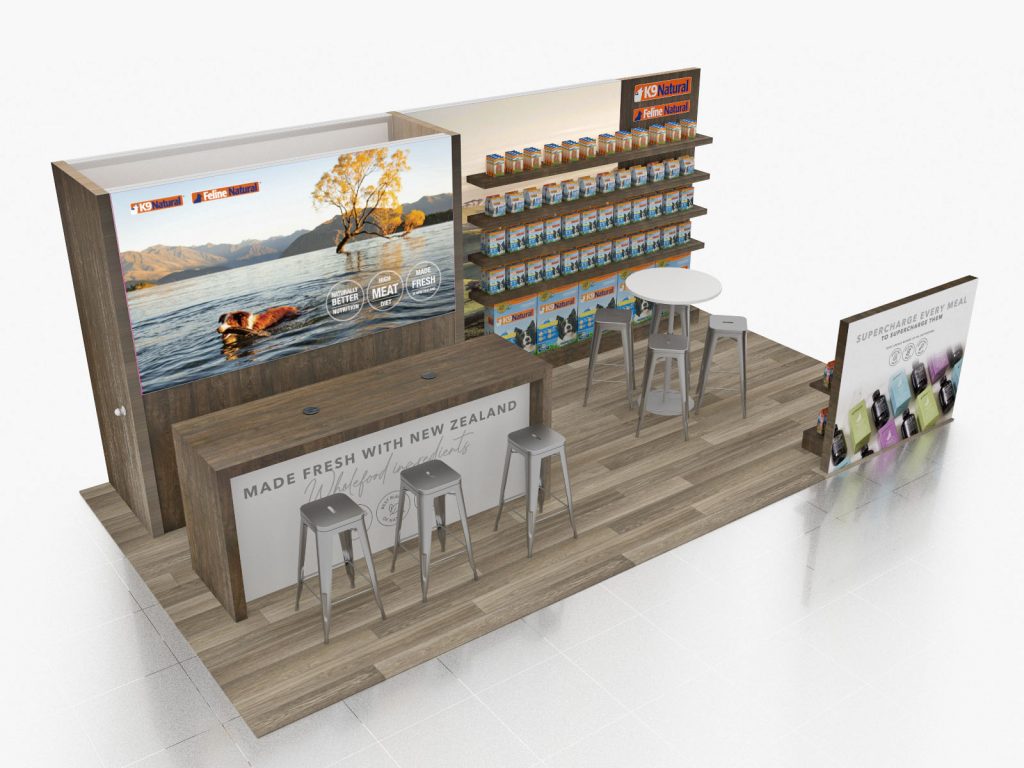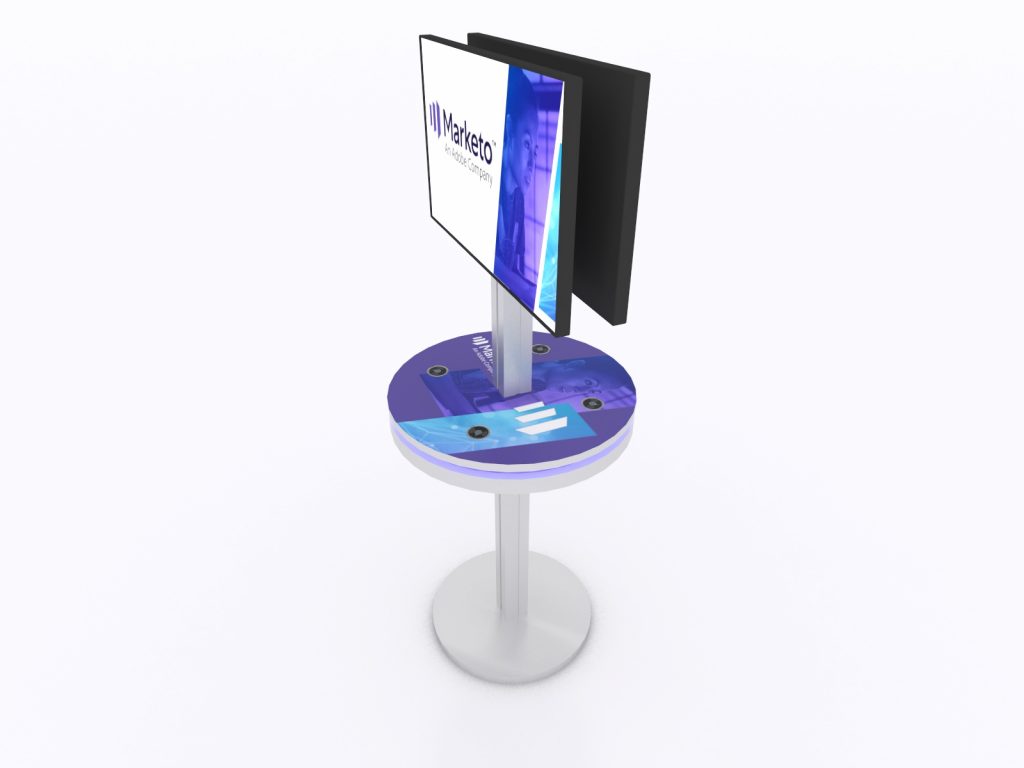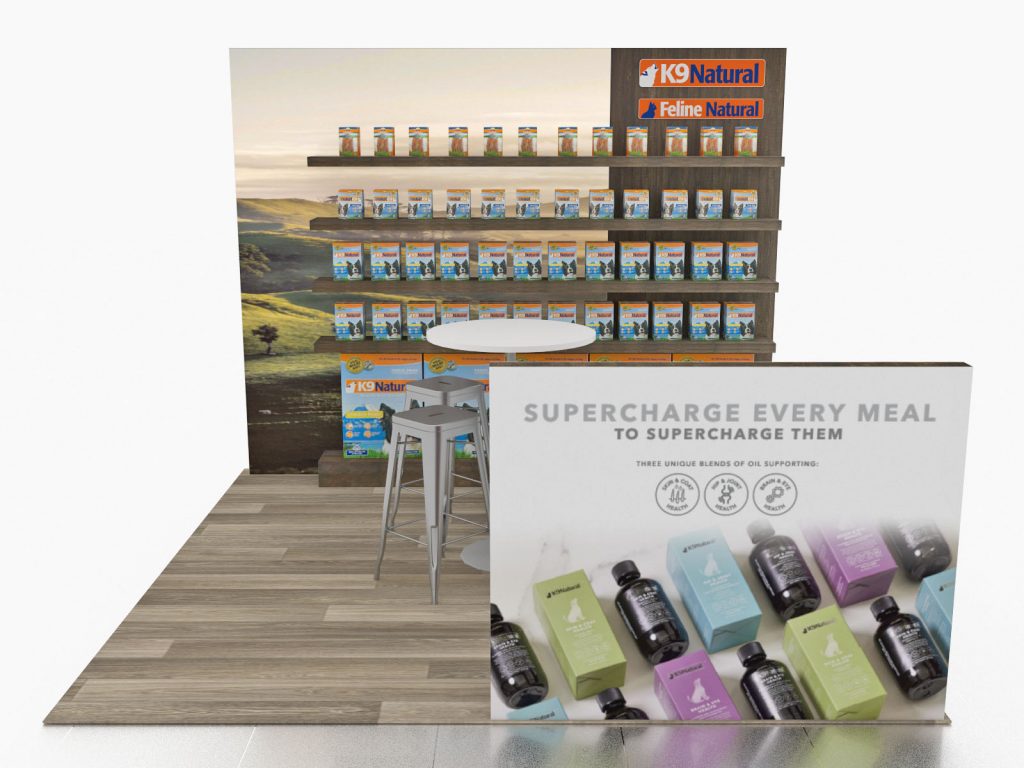
Ideally, every service provider or manufacturer would love to have potential clients visit their facility. But that’s not practical. Their next best option is to exhibit at a trade show where they can showcase their brand, products, and services in an exhibit. For many companies, a custom trade show product display allows them to place their products “front and center” in the booth space.
Many trade show product stands are designed to facilitate demos, tastings, or giveaways, while also functioning as a graphic anchor for the booth. For example, imagine eight layered shelves with bags of dog food on a 12 ft. tower, each shelf featuring a different product line. Not only is the presentation visually impactful, but it also allows the booth staff to show the products and increase attendee engagement. The more engagement, the more likely a higher ROI on the trade show investment.
When to Leverage Trade Show Product Displays
Not every exhibitor needs product displays. For most service-focused companies, like consulting providers, software services, creative/design companies, and event planning agencies, their trade show booth will feature large graphics, comfortable seating, and A/V, like monitors and LED video tiles.
However, for companies with physical products, the ability for clients to see, touch, taste, or smell their products is crucial to their trade show success. For them, “show and tell” isn’t standing in front of a monitor. It’s handing the product to an attendee, inviting them to participate in a demo, and giving them the opportunity to test it right then and there.
Too often, however, a poorly designed exhibit invites clutter in the booth. Attendees shy away from entering the space and the clutter damages the brand and the message. Professional exhibit designers understand how to maximize the overall presentation with shelves, product displays, and fixtures while creating an efficient space for demos and traffic floor. The booth simply works as a marketing tool from the first day to the last day of the trade show.
Trade Show Product Display Stands: Elevate Featured Products
Display stand options like pedestals, integrated lighting, or rotating stands vary widely depending on each exhibitor’s strategic marketing requirements. In some cases, the perfect stand already exhibits. For example, this article features “8 Display Stand Options to Showcase your Products.”
In other cases, an existing product display will need to be modified or custom designed to fit an exhibitor’s specific requirements.
If your goal is to showcase products as a visual design feature in your booth, consider these examples as ideas:
Islands
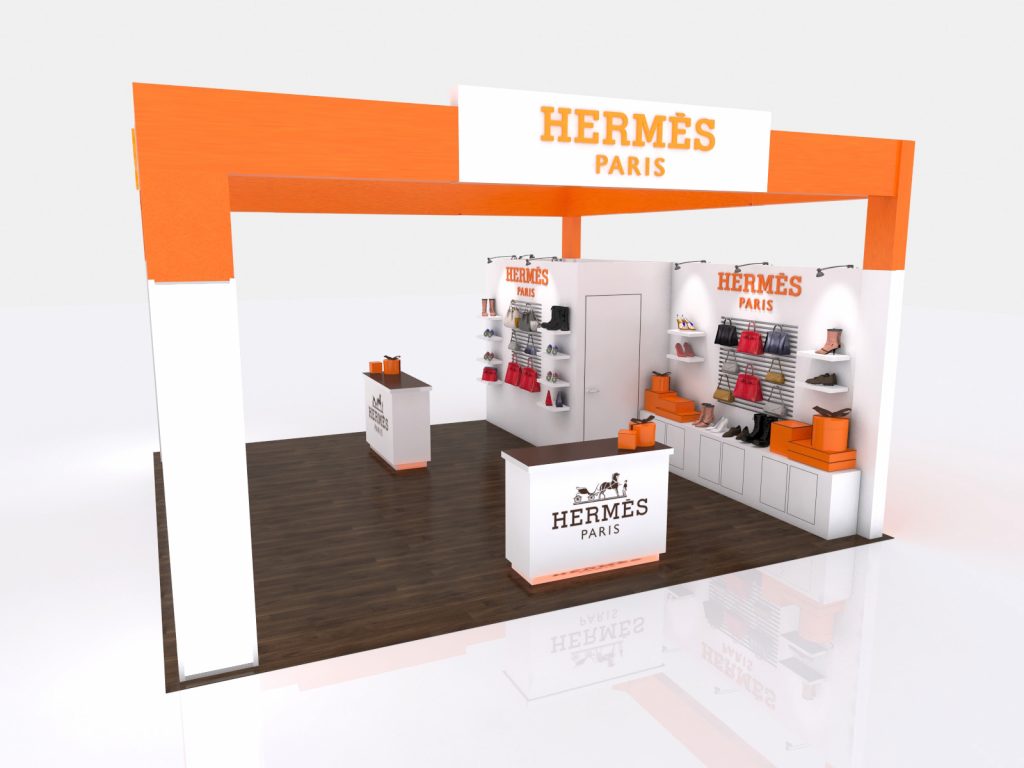
VK-5160 | Custom Island. Enticing exhibitors to step into your booth is the goal of every exhibitor. The open floor plan invites attendees into the space and the multiple counters and shelves make it easy to show products.
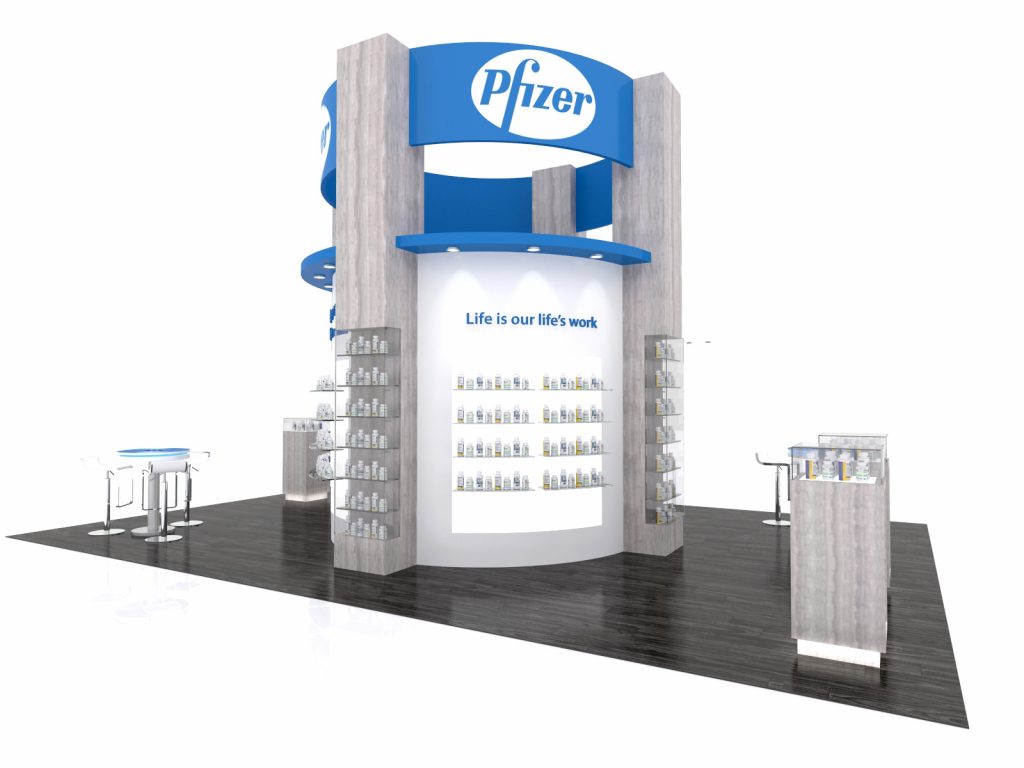
VK-5158 | Custom Island. Drop dead gorgeous! The VK-5158 custom island has an impressive multi-purpose tower, complete with 28 shelves and 4 product showcases.

VK-5195 | Island Exhibit. An effective trade show display should be practical, like including storage, shelving, and seating.The reconfigurable VK-5195 combines practical product displays, meeting space, and closet storage into an attractive exhibit designed to showcase products and promote conversation.
Inlines
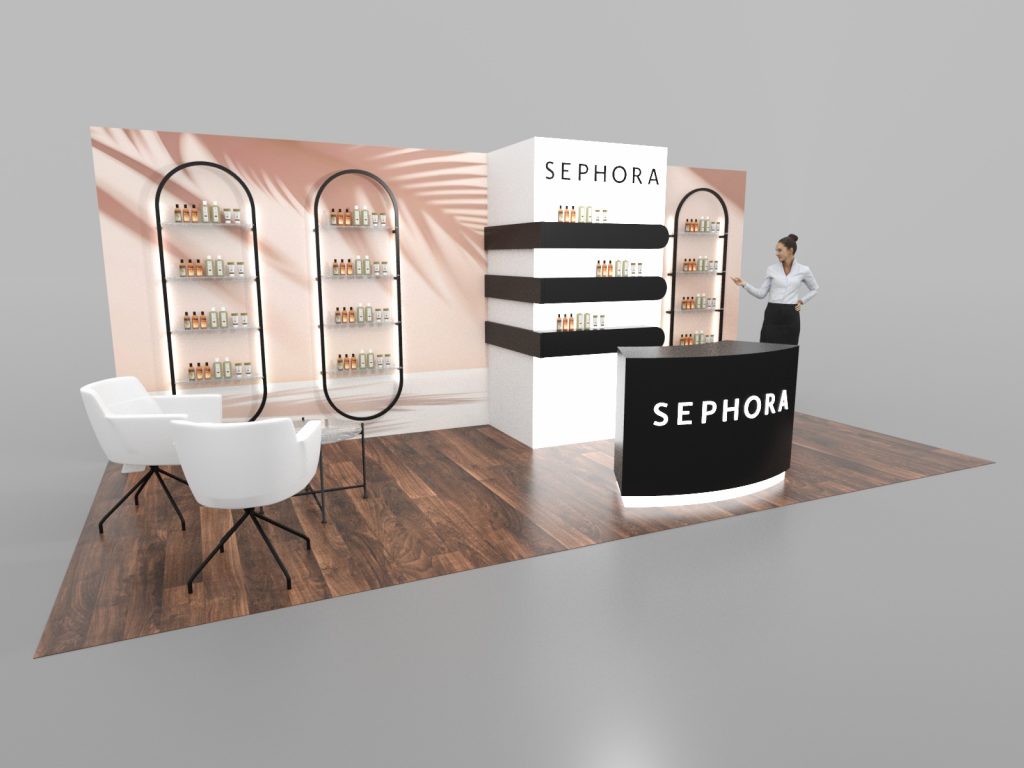
GK-1021 | Gravitee Inline. The Gravitee Modular Wall System includes extensive shelving options, SEG fabric graphics, and attractive LED accent lighting. In addition, there’s a large reception counter with backlit logo and locking storage, and space for a casual seating area.
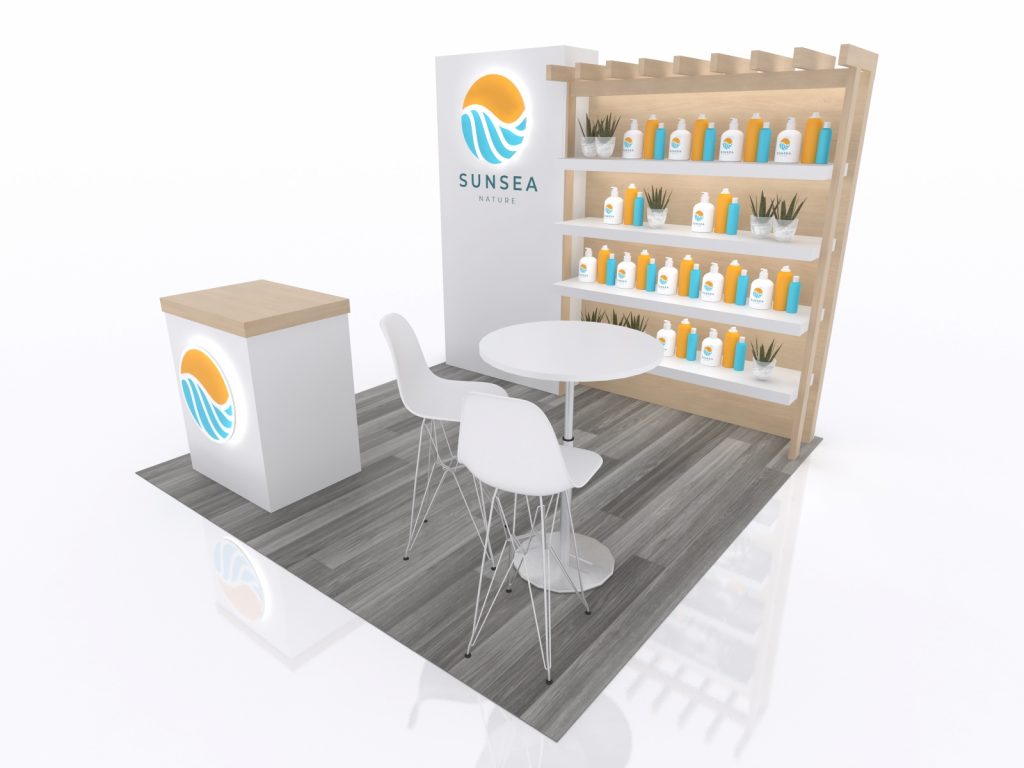
VK-1359 | Custom Inline. Practical and dramatic are not mutually exclusive. The VK-1359 perfectly blends dramatic 3D LED lighting, a stunning pergola design, and practical shelving.
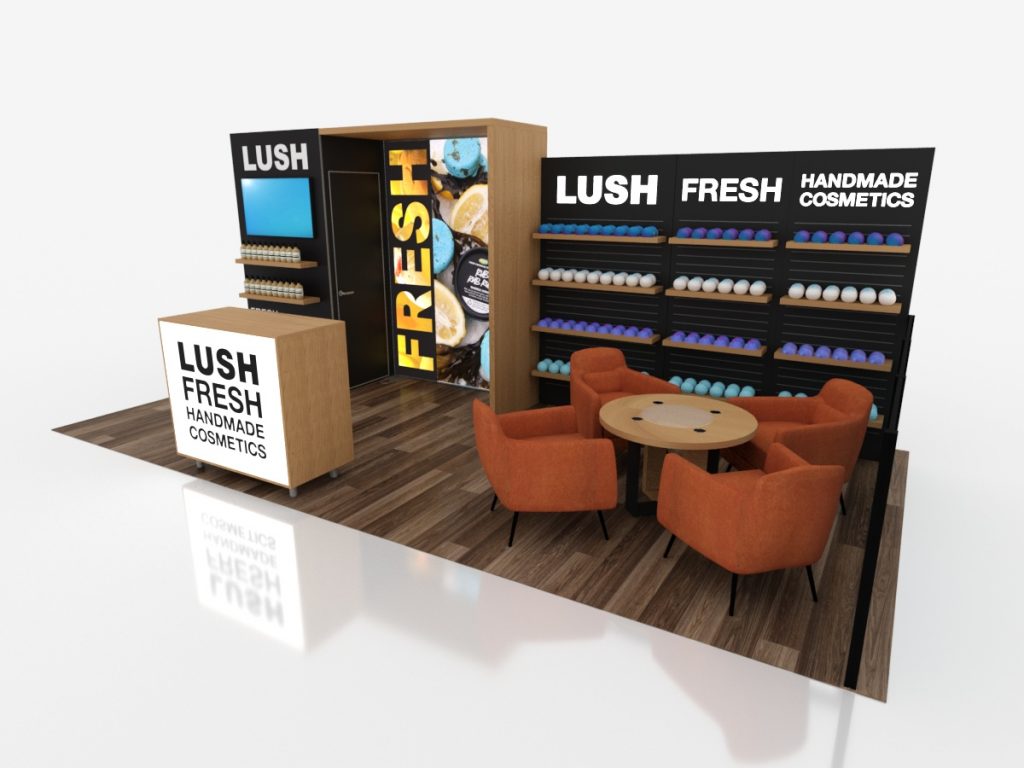
ECO-2038 | Sustainable Inline. Eco-friendly products are all the rage and the ECO-2038 makes showcasing those products both attractive and easy. The design has 12 shelves and 3 slatwall for products. These are just the tip of the iceberg with over 200 inline and island designs in Exhibit Design Search preconfigured for trade show product display shelves. Not seeing the perfect design for your marketing goals? No problem. Nearly every design in Exhibit Design Search can be modified to include shelves, pegboard, or retail fixturing.
Trade Show Product Display Shelves: Showcase Multiple SKUs with Style
Not every exhibitor needs extensive shelving. Some want to highlight a new product or a limited number of SKUs on the show floor. For those exhibitors, a trade show product display kiosk makes more sense. Kiosks are the perfect choice when exhibitors want to concentrate attention on a limited number of products and maximize their floor space. The kiosks below demonstrate how a kiosk or display stand can turn a product into the star attraction.

MOD-1395 | Monitor Kiosk. Custom monitor stand and kiosk with wraparound shelves, LED accent lights, and 2 monitor mounts.
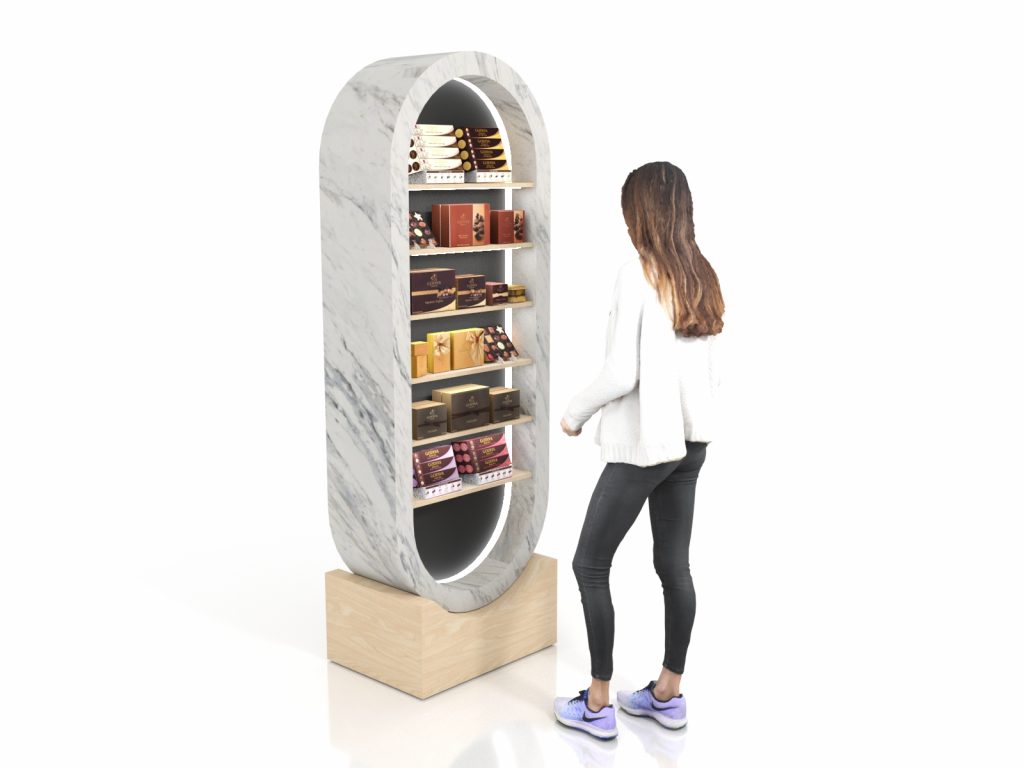
MOD-1397 | Shelving Tower. Upscale shelving display with 12 shelves and hundreds of laminate options.
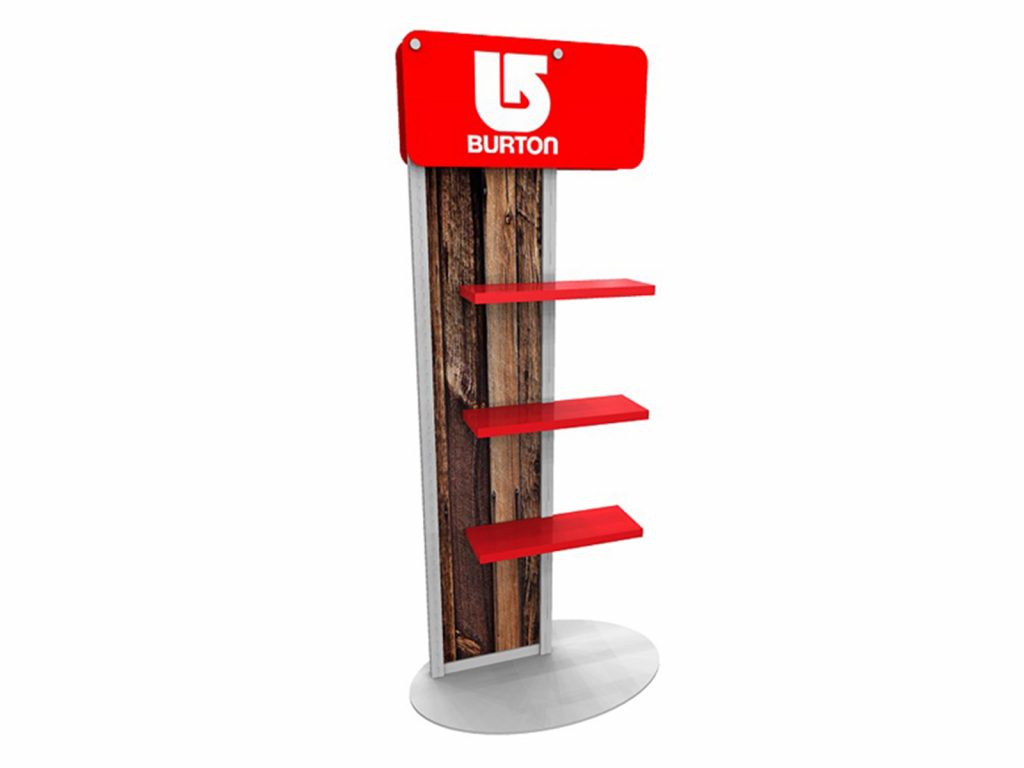
ECO-13K-A | Shelving Kiosk. Attractive sustainable product display with 3 shelves and double-sided graphics.

ECO-7K | Showcase Tower. Locking eco-friendly showcase tower with LED lighting and storage.
When choosing the right workstation or kiosk for your display, consider how you will use it on the show floor. Not everyone needs a one-size fits all approach. Most product display kiosks or stands can be customized to maximize your trade show objectives.
Trade Show Product Display Ideas: Creative Ways to Stand Out
A trade show is a fantastic opportunity to showcase your products and brand, but in a sea of booths, it’s crucial to find creative ways to stand out. Here are some innovative trade show product display ideas to help you attract attention and leave a lasting impression:
The Power of Interactive Experiences
Static displays are a thing of the past. Engage attendees by letting them get hands-on with your products.
- Interactive Demos: Allow potential customers to “try before they buy.” This is particularly effective for tech, software, or complex products where a hands-on experience can effectively communicate value. You can even use offline demos to avoid potential Wi-Fi issues in a crowded hall.
- Virtual Reality (VR) and Augmented Reality (AR): Transport attendees to another world. A VR experience can let a person “hike” in a national park while wearing your hiking boots, or an AR overlay can show them how your furniture would look in their home.
- Gamification: Create a game that relates to your product or industry. This could be a trivia showdown, a puzzle, or even a branded golf simulator. Offer prizes for top scores to create a fun, competitive atmosphere.
- Touchscreen Kiosks: Provide self-guided digital catalogs or interactive information hubs. This allows visitors to explore your offerings at their own pace.
Captivating Visuals and Sensory Marketing
Appeal to multiple senses to create a memorable and immersive experience.
- LED Lighting: Use creative lighting to highlight your products. Spotlights can draw attention to a star product, while colored or ambient lighting can set a mood and make your booth feel like a comfortable lounge. Backlit displays and LED walls are also great for dynamic, eye-catching visuals.
- Bold Colors and Graphics: Use a well-planned color palette (60% primary, 30% secondary, 10% accent) that aligns with your brand. Don’t be afraid to use large, high-resolution graphics that tell a visual story and can be seen from across the room.
- Multi-Sensory Booths: Incorporate smells, sounds, and even tastes (if applicable) to make your booth stand out. Playing subtle, curated music can create a welcoming atmosphere.
- Unique Structures and Shapes: Break the mold of a standard rectangular booth. Curved walls, angled corners, or multi-level displays can trigger curiosity and make your space more visually interesting.
Simple, Yet Effective Ideas
Sometimes the most impactful ideas are also the simplest.
- Show Your Product in Action: Don’t just place your product on a table. Display it in use. For example, a cat product can be shown on a cat tree, or a clothing item can be modeled on a mannequin.
- Offer Unique Giveaways: Move beyond the standard branded pen. Think of useful and creative swag that attendees will actually want to keep, like portable chargers, eco-friendly items, or customized on-site printing.
- Themed Booths: Design your booth around a specific theme that relates to your brand or an industry trend. This creates a cohesive and memorable experience.
Trade Show Product Display Setup Tips for a Stronger First Impression
Provide actionable tips for layout, height placement, lighting, traffic flow, and booth functionality. Emphasize how setup supports both form and function.
Bring Your Trade Show Product Displays to Life with Custom Solutions
Still unsure how to showcase your products at a trade show? We get it. Not only are your products unique but how to feature them depends on your branding, messaging, and objectives. Which is why it’s important to work with a professional exhibit designer. At Classic Exhibits, we’ve been transforming “ideas and feelings” into successful trade show exhibits for over 30 years.
As North America’s largest private-label exhibit manufacturer, we have the unmatched capability, capacity, and creativity to create 3D projects ranging from 10 x 10 inline displays to 60 x 80 double-deck islands. Find success on the trade show floor with an exhibit that reflects your marketing message. For more information, see www.classicexhibits.com and explore Exhibit Design Search or request a meeting with a Classic Distributor Partner.


